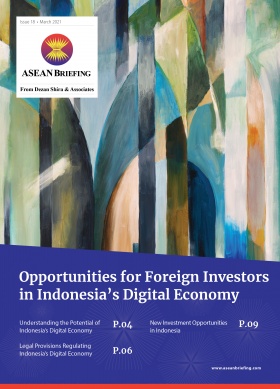Malaysia Looking to Increase Palm Oil Exports to Bangladesh
Malaysia is eager to increase palm oil exports to Bangladesh as the country seeks to increase its global market share of the industry. The government has also been engaging with countries in the Middle East such as Saudi Arabia and Iran, as well as eastern Europe and South Asia.
Bangladesh imports over US$2 billion worth of edible oils (palm oil and soybean oil) annually with per capita oil and fat consumption seeing nearly a 100 percent growth from 11.8 grams in 2013 to 22 grams in 2021. Of the 1.4 million tons of imported palm oil in 2020, 20 percent came from Malaysia and the remaining from Indonesia.
Malaysia accounts for between 25 and 24 percent of total palm oil production and exports, after neighboring Indonesia. In 2020, palm oil constituted nearly 70 percent of Malaysia’s total agricultural output and covers some 20 percent of the country’s land.Continued potential for palm oil exports to Bangladesh
Bangladesh, which imports over 1 million tons of palm oil annually, can become an important new market for Malaysian palm oil, especially if the EU continues with its plans to halt the import of raw palm oil from Indonesia and Malaysia by 2030, citing allegations that palm plantation contributes to deforestation.
Under the EU’s revised Renewable Energy Directive, also known as RED2, the bloc will start to phase out palm oil-based fuels in 2023, and biofuels made from food crops will be reduced to zero by 2030.
By expanding its export markets to countries like Bangladesh, Malaysia can gradually offset some of the losses from the EU. Bangladesh already imports 3 million tons of oils and fats (1.5 million tons is palm oil) because it is unable to meet domestic demand from indigenous production. According to the Malaysian Palm Oil Council (MPOC), Bangladesh’s palm oil consumption is projected to increase to 1.9 million tons by 2025 from 1.4 million tons in 2020.
This can be attributed to an improving economy, which since independence, has emerged to be South Asia’s second-largest with the country first overtaking India in terms of per capita GDP in 2020. Further, Bangladesh is forecasted to have a GDP per capita of US$3,253 in 2026, compared to India’s US$3,018 and rapid urbanization will lead to an increase in edible oils.
As a result, the country’s population of some 170 million has also seen an increase in the per capita consumption of oils and fats during the last decade from 11.8kg in 2013 to 18.9kg in 2019, as more people increase their consumption of processed foods.Increasing market share
Malaysian producers can also begin to increase their market share of the Bangladesh market from Indonesia as the latter aims to reduce its export of raw palm oil in a bid to attract greater investments in local resource processing capabilities.
As Indonesia looks to export refined palm oil, demand for crude palm oil (CPO) will lead buyers to Malaysian producers. Malaysia has surpassed Indonesia to become the biggest CPO exporter to India in 2020/21, as Indonesia imposed higher levies on CPO exports to raise funds for its ambitious downstream programs.
About Us
ASEAN Briefing is produced by Dezan Shira & Associates. The firm assists foreign investors throughout Asia and maintains offices throughout ASEAN, including in Singapore, Hanoi, Ho Chi Minh City, and Da Nang in Vietnam, Munich, and Esen in Germany, Boston, and Salt Lake City in the United States, Milan, Conegliano, and Udine in Italy, in addition to Jakarta, and Batam in Indonesia. We also have partner firms in Malaysia, Bangladesh, the Philippines, and Thailand as well as our practices in China and India. Please contact us at asia@dezshira.com or visit our website at www.dezshira.com.







